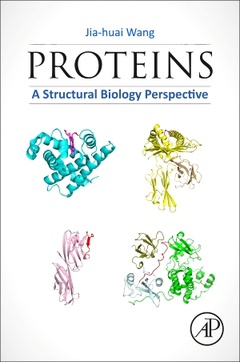Proteins A Structural Biology Perspective
Auteur : Wang Jia-huai

Proteins: A Structural Biology Perspective explains how advances in modern physics fueled the birth of structural biology and modern molecular biology in the early to mid 20th century. Scientifically rigorous and deeply informed by the author’s own 60-year career as a structural biologist, the book provides historical and personal accounts of how two generations of renowned scientists doggedly pursued their research projects to arrive at milestone achievements, while also covering basic aspects of protein structures and their evolution with a special focus on molecules at the surface of cells and viruses. Since 1962, when only a single structure for myoglobin had been determined at atomic resolution, the rapidly evolving field has grown exponentially to fill protein structure databases (PDB) worldwide with hundred thousands of structures for basic research and medical advancement. From “What is a Wave?” to “What Is Life?”, Proteins: A Structural Biology Perspective takes readers on a uniquely intimate journey through the past 100 years of protein science, while providing an up-to-the-minute assessment of successful structure prediction by AI models like AlphaFold and RoseTTAFold and where it’s all likely to lead. Outfitted with detailed illustrations and authoritative citations, this is a valuable resource for graduate students and young research scientists in biology and the medical sciences.
1. From “What is wave” to “What is life” to the booming structural biology 2. From a to b: The beginning of protein structure analyses 3. Proteins-in-modules and genes-in-pieces. How proteins evolve 4. How one structure has changed a field—the MHC molecules in cellular immunity 5. T cell receptors, the molecular bodyguard in ab T lymphocyte immunity 6. Protein-mediated cell-cell interactions in multicellular biology 7. How do viruses assemble and infect their host cells? 8. AlphaFold2, the successful prediction of three-dimensional protein structures and its impact on structural biology
- Provides readers with the knowledge and mindset necessary to explore the molecular intricacies of biological systems through the lens of protein structures
- Focuses on two points: from genomic perspective and from protein-protein interaction view of protein structures
Date de parution : 09-2024
Ouvrage de 210 p.
15.2x22.8 cm



